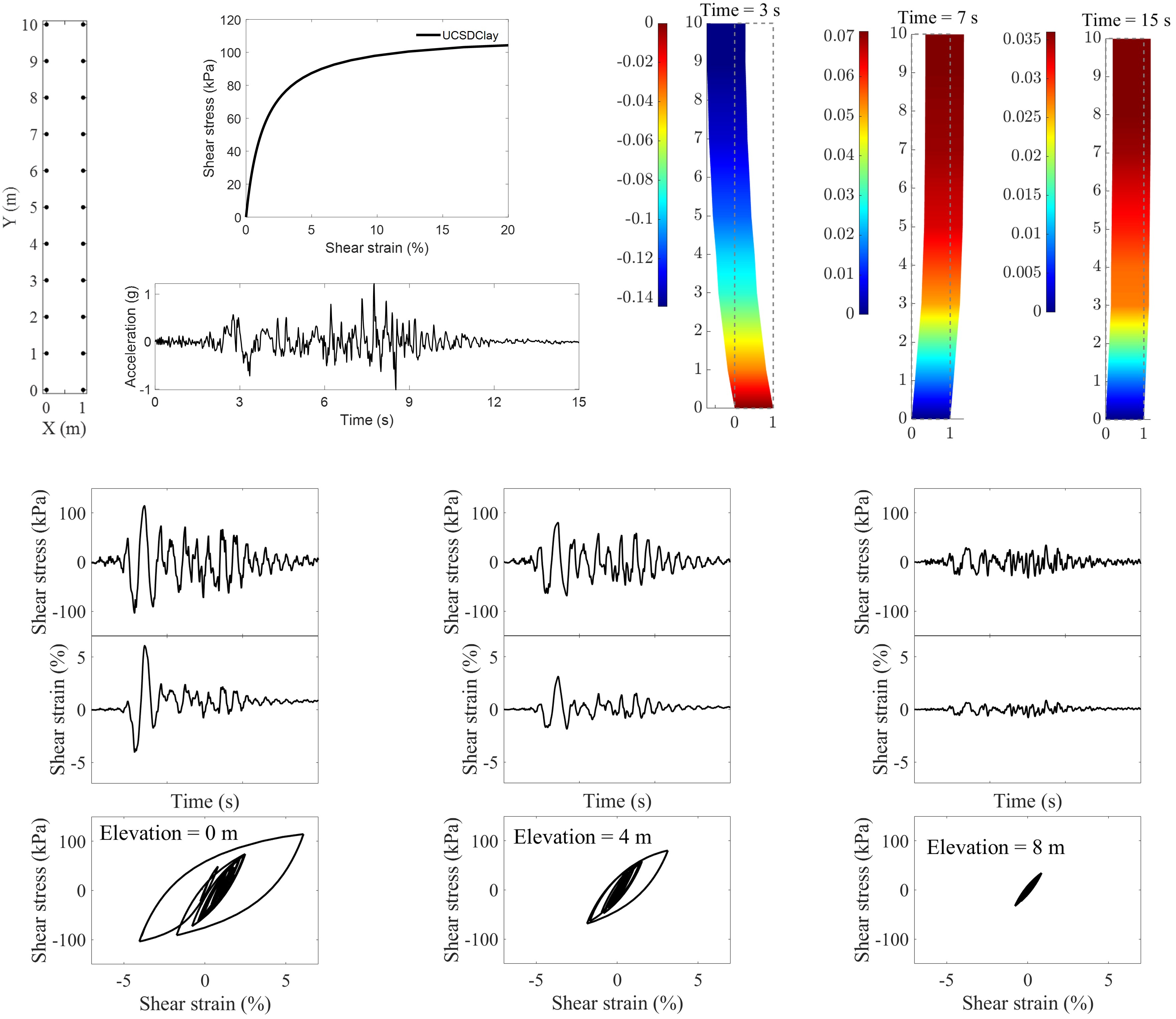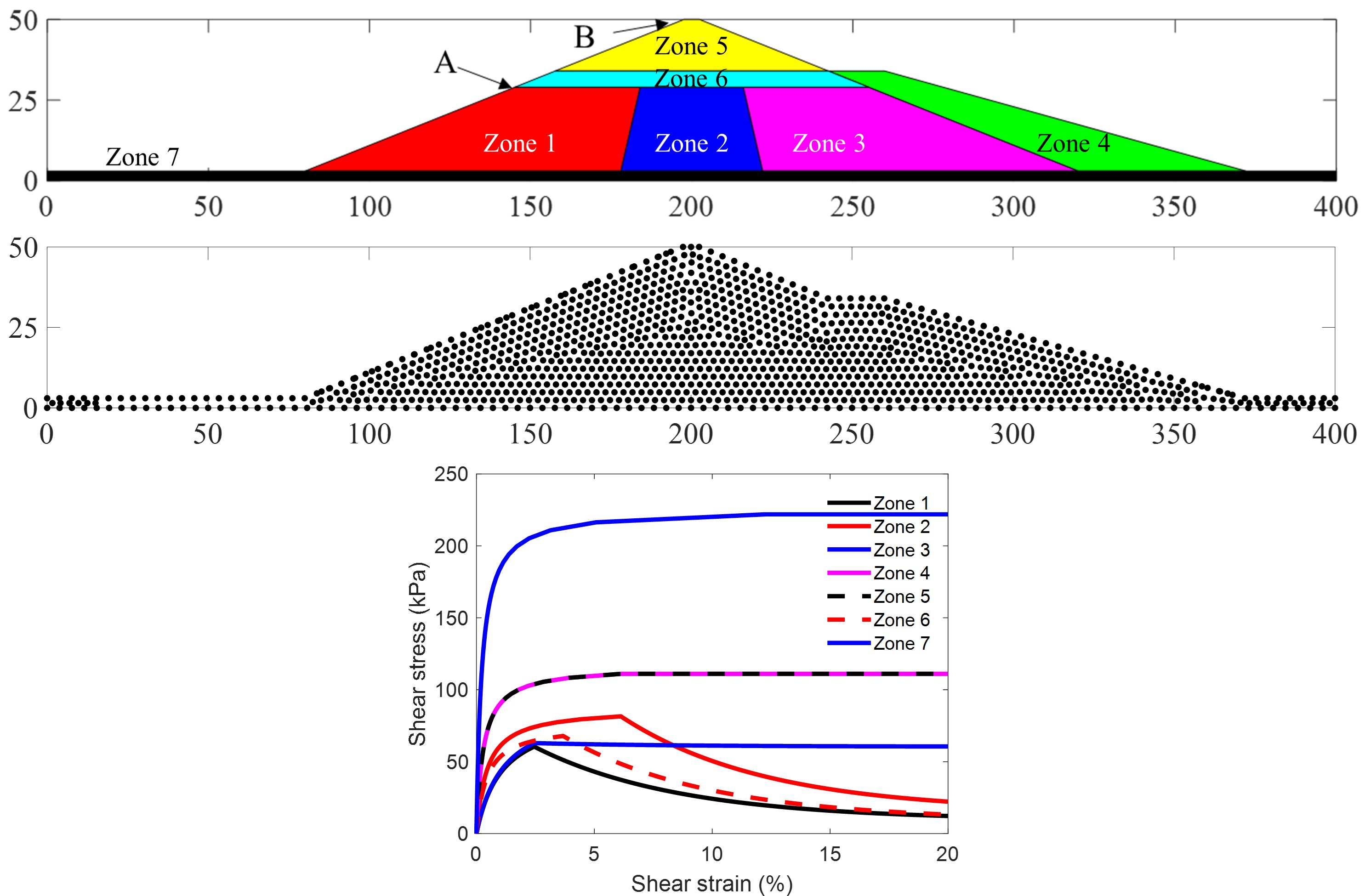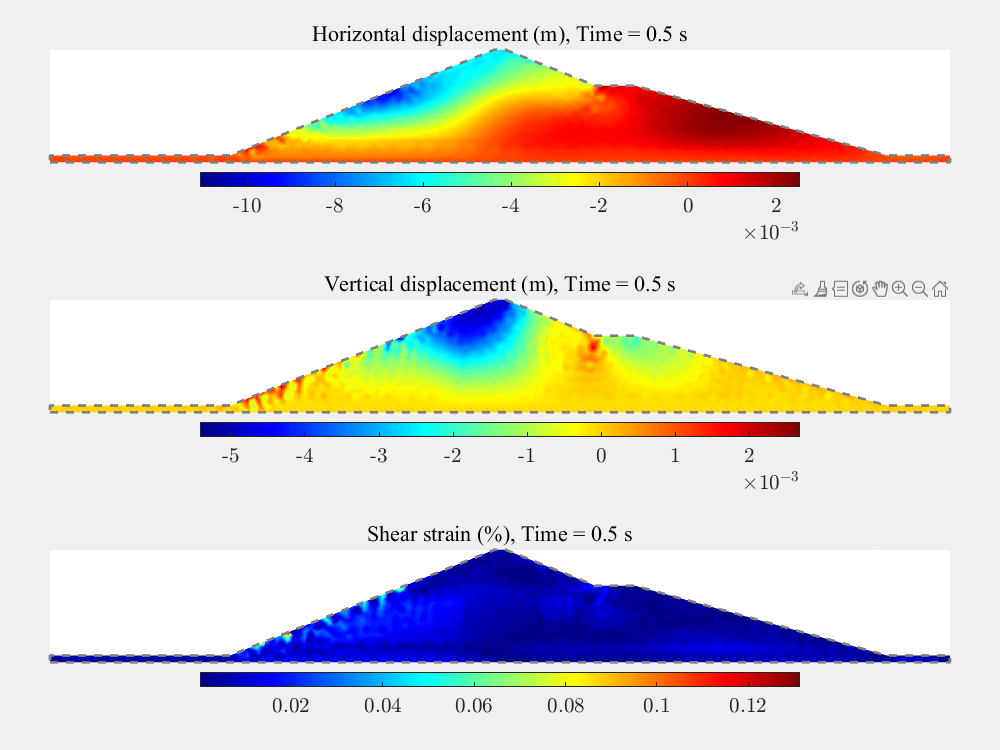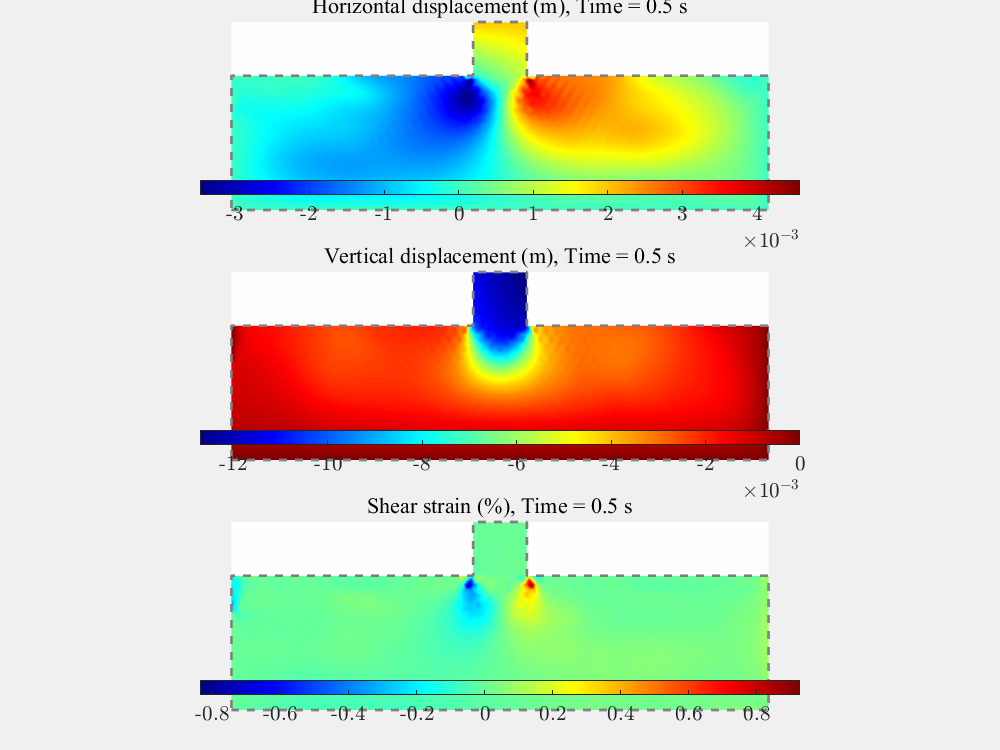
|
RKPM2D-EQ Large-strain Computational Framework
by Ahmed Elgamal, Jiun-Shyan Chen, Zhijian Qiu, Jonghyuk Baek, Tsunghui Huang, Haoyan Wei, Jinchi LuAcknowledgements: The research was primarily supported by the Pacific Earthquake Engineering Research Center (PEER). This support is greatly appreciated (https://peer.berkeley.edu/research/transportation-systems).
Abstract
An effort is made to bring the capabilities and advantages of the meshfree method within a dedicated open-source framework for use in earthquake engineering applications.This effort builds on the open source RKPM-based meshfree computational framework developed by Prof. JS Chen and coauthors (Chen et al. 2013, 2017a, b; Chen and Belytschko 2015; Huang et al. 2019) for linear static analysis. The open-source codes RKPM2D (Huang et al. 2019; https://link.springer.com/article/10.1007/s40571-019-00272-x) is available at: https://data.mendeley.com/datasets/prfxg9cbrx/3.
Currently, the original RKPM2D framework has been updated with the following capacities (i.e., RKPM2D-EQ): 1) dynamic analysis, 2) material (soil) nonlinear elasto-plastic modeling, 3) periodic boundary, 4) large-strain analysis module, and 5) multi-zone material representation. As such, 1) site response analysis; 2) large-deformation dynamic analysis of a simple earth dam configuration under earthquake loading; 3) dynamic analysis of a building resting on soft clay, are shown below, to demonstrate the capabilities of this extended computational framework (i.e., RKPM2D-EQ).
Download RKPM2D-EQ computational framework below:
RKPM2D-EQ computational framework (updated 10/17/2022)
Application Examples
1. Site Response

2. Large-deformation dynamic analysis of an earth dam
2.1 Configuration
2.2 Computed results

3. Dynamic analysis of a building resting soft clay
3.1 Configuration
3.2 Computed results

References:
1. Chen, J. S., Hillman, M., and Rüter, M. (2013) An Arbitrary Order Variationally Consistent Inte-gration Method for Galerkin Meshfree Methods. International Journal for Numerical Methods in Engineering, 95, 387-418.
2. Chen, J.S., and Belytschko, T. (2015). Meshless and meshfree methods. Encyclopedia of applied and computational mathematics, 886-894.
3. Chen, J.S., Liu, W.K., Hillman, M.C., Chi, S.W., Lian, Y., and Bessa, M.A. (2017a). Reproduc-ing Kernel Particle Method for Solving Partial Differential Equations. Encyclopedia of Computa-tional Mechanics Second Edition, 1-44.
4. Chen, J.S., Hillman, M., and Chi, S.W. (2017b). Meshfree methods: progress made after 20 years. Journal of Engineering Mechanics, 143(4), 04017001.
5. Hillman, M., and Chen, J. S. (2016). An Accelerated, Convergent and Stable Nodal Integration in Galerkin Meshfree Methods for Linear and Nonlinear Mechanics. International Journal for Nu-merical Methods in Engineering, 107, 603-630.
6. Huang, T.H., Wei, H., Chen, J.S., and Hillman, M.C. (2019). RKPM2D: an open-source imple-mentation of nodally integrated reproducing kernel particle method for solving partial differential equations. Computational Particle Mechanics, 1-41.
7. Qiu, Z. and Elgamal, A., 2020. Three-Dimensional Modeling of Strain-Softening Soil Response for Seismic-Loading Applications. Journal of Geotechnical and Geoenvironmental Engineering, 146(7), p.04020053.